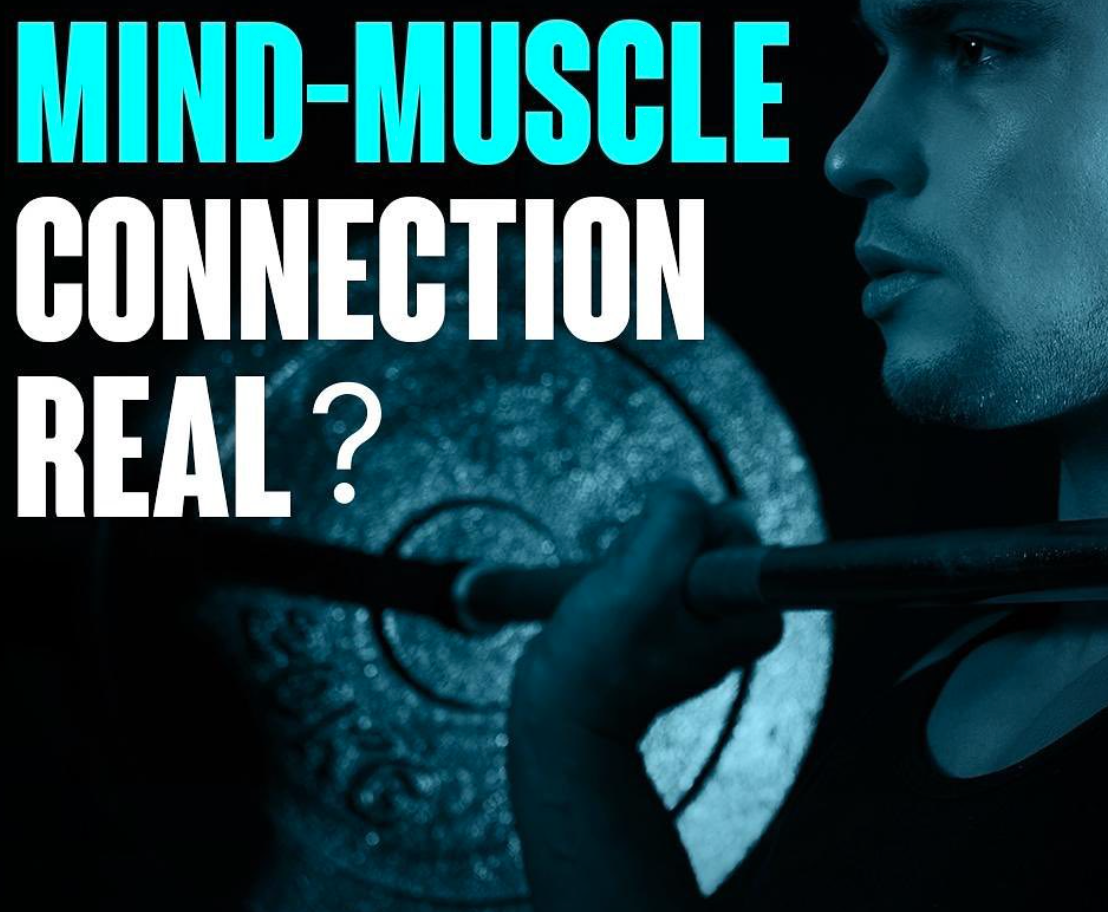The “mind-muscle connection” is when you focus on using a specific muscle during exercise to make it work better and grow more. This is called internal cuing.
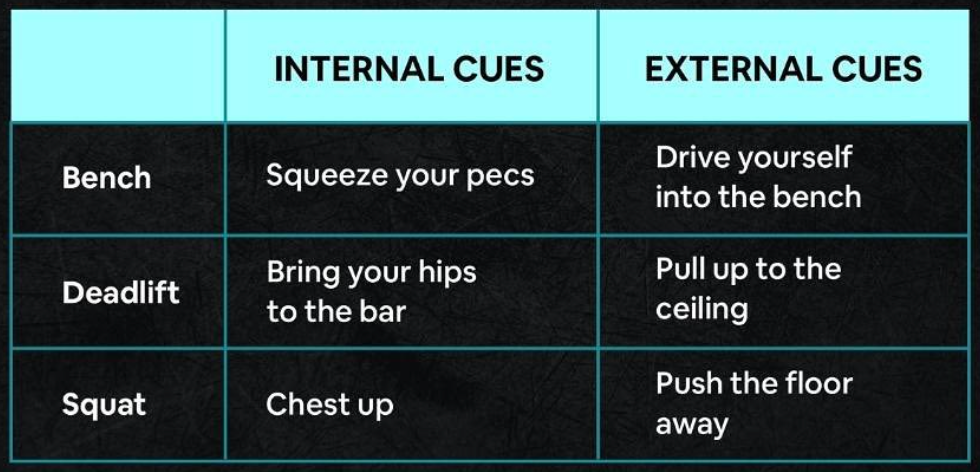
It’s different from external cues, which focus on the end result of the exercise, like lifting a heavier weight.
External cues are better for improving performance, but internal cues can help activate muscles more.
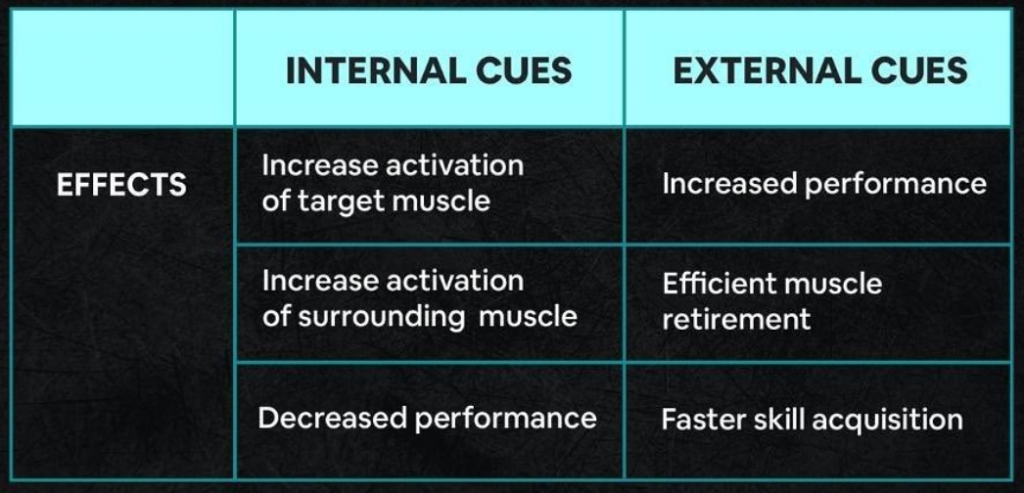
However, using internal cues may lead to less efficient movements and more muscle activation in other muscles besides the target muscle.
A 2017 study Published in the Journal of Strength and Conditioning Research aimed to analyse athletes doing leg exercises, specifically leg extensions, whilst being told to focus either on their muscles or on the outcome.
PMID: 28142073
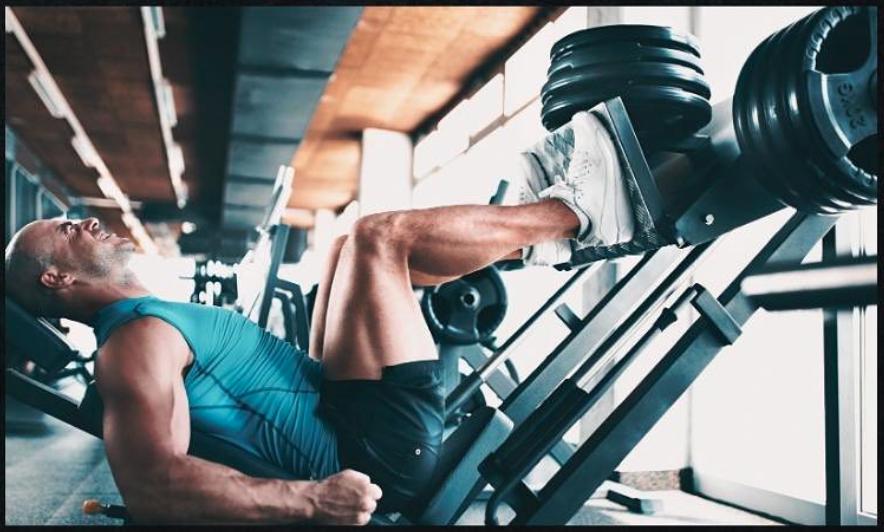
The subjects were 16 male and 4 female athletes who were intermittent team sport players with a minimum of 3 years experience but were NOT “specifically strength trained” but had some experience with knee extension exercises as part of their sports conditioning programs.
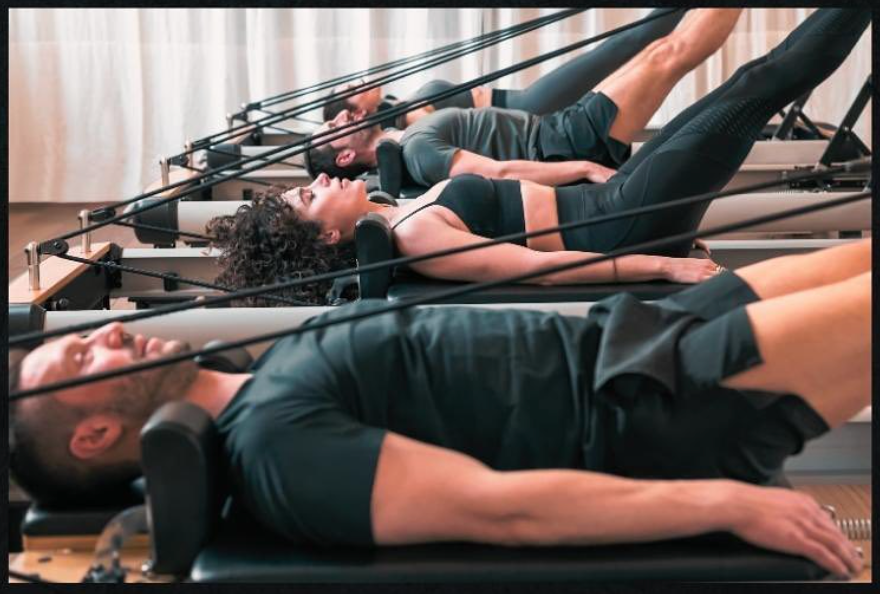
Testing involved having participants use a special machine (isokinetic machine) that only moves at a set speed to do knee extensions.
The participants were asked to do 10 repetitions of the knee extension exercise with both internal cues (focusing on contracting a specific muscle) and external cues (focusing on pushing against the pad).
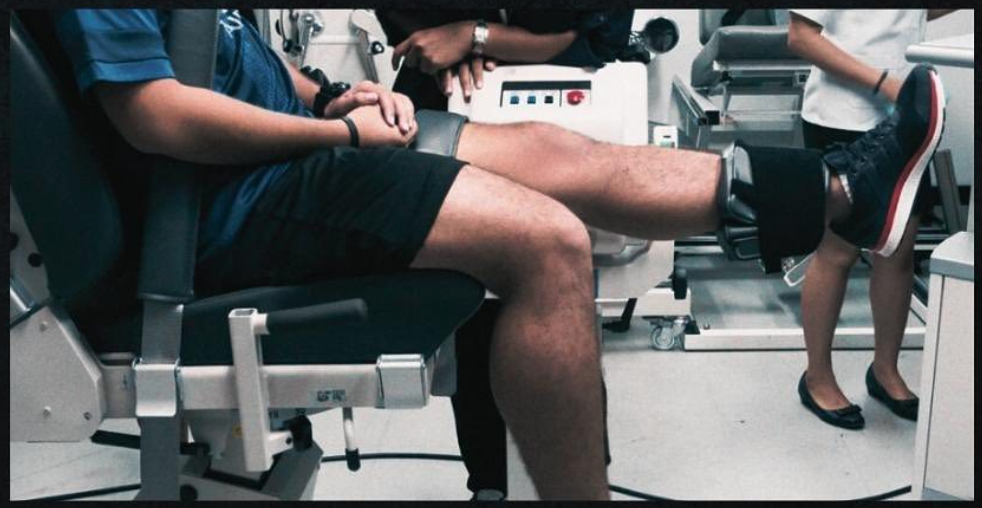
The researchers measured the participants:
- peak joint torque (how much force they could generate)
- mean power output (how quickly they could generate force) during the exercise.
They also used surface EMG to measure the electrical activity of the different muscles of the legs. All testing took place on a single day, and participants were given a warm-up session and familiarisation with the knee extension machine before starting the test.
RESULTS
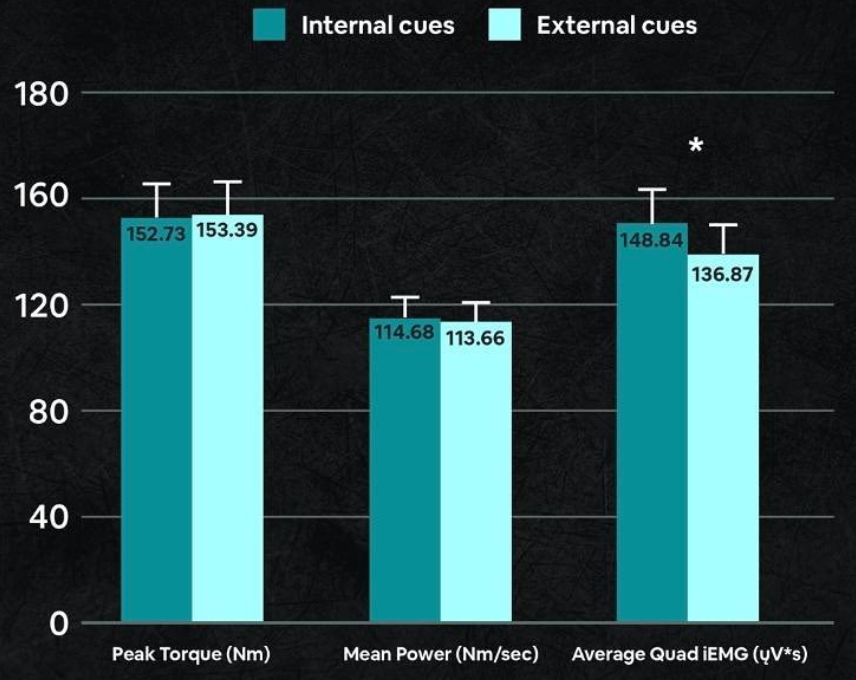
Peak knee joint torque and mean power output was identical with both styles of cuing (the differences between conditions were smaller than 1%).
RESULTS
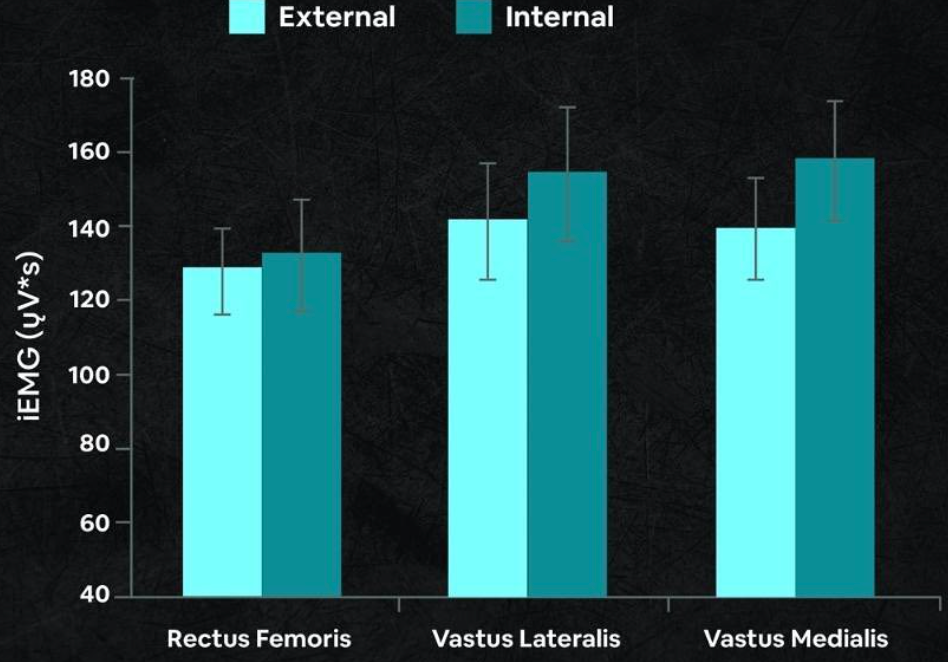
Electrical activity in the leg muscles was higher with internal cuing than external cuing, but the increase in electrical activity was similar in all three muscles.
CONCLUSION
External cues are more effective in improving performance and efficiency during exercise than internal focus instructions, whilst internal cues are more effective in muscle activation.
NEXT STEPS
- FOR PERFORMANCE
Use external cues as they can improve performance, and even if it does not, it can still result in a more efficient muscle recruitment strategy, as demonstrated in the study.
- FOR HYPERTROPHY
Use internal cues as they increase muscle activation when the muscles are not fatigued. However, there is currently no evidence from long-term studies to show that internal cuing leads to increased hypertrophy.
P.S You can buy any 3 items from our new range for £50 (saving you £25), We ship globally too.
Use code “3for50” to apply the discount.

